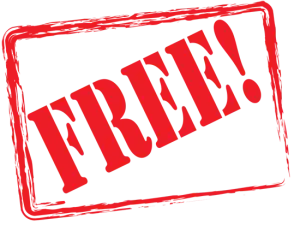Diesel engine maintenance on a yacht
Basic diesel mechanic knowledge is essential for sailors, as diesel engines are often sailboats’ primary auxiliary power source. Understanding how to perform routine maintenance and troubleshoot common issues can save time and money and even prevent emergencies. Here’s an overview of the key areas to focus on:
1. Understanding How a Diesel Engine Works
Basic Components: Familiarize yourself with the key parts of a marine diesel engine:
- Fuel System: Includes the fuel tank, fuel lines, filters, injectors, and fuel pump.
- Cooling System: Most marine diesel engines are water-cooled, using seawater or freshwater cooling systems.
- Lubrication System: Oil is essential for keeping engine components moving smoothly and reducing friction.
- Exhaust System: Ensures exhaust gases are expelled safely. Marine engines often have a “wet” exhaust, where seawater cools the exhaust gases.
- Electrical System: Diesel engines use batteries to start and power electrical components.
Four-Stroke Process: The engine operates in four strokes: intake, compression, combustion, and exhaust. Understanding how the engine runs and why certain issues (like fuel or air supply problems) can cause failures is key.
2. Fuel System Maintenance
- Bleeding the Fuel Lines: Diesel engines are sensitive to air in the fuel lines. If air enters the system (e.g., when changing fuel filters or running out of fuel), you’ll need to bleed the system by opening bleed screws and using the manual pump until fuel flows without bubbles.
- Changing Fuel Filters: The fuel filter should be checked regularly and replaced when clogged to prevent contaminants from reaching the engine. There are usually two filters: a primary (before the fuel reaches the engine) and a secondary filter.
- Keeping Fuel Clean: Diesel fuel can become contaminated by water or algae. Using biocides in the fuel tank and regularly draining water from fuel/water separators helps prevent blockages.
3. Cooling System Knowledge
- Check Coolant Levels: Ensure sufficient coolant is in the system, whether it’s seawater or freshwater cooled. Low coolant levels can lead to overheating.
- Inspect the Raw Water Strainer: If your engine uses seawater for cooling, check and clean the raw water strainer regularly to prevent clogs that could reduce cooling efficiency.
- Check Impellers: The water pump’s impellers (small rubber pumps) should be inspected for wear and replaced regularly. A failed impeller will cause cooling system failure and can lead to engine overheating.
4. Oil and Lubrication
- Check and Change Oil: Use the dipstick to check the oil level regularly and ensure it’s topped up to the recommended level. Change the oil and oil filter at regular intervals, as the engine manufacturer specifies.
- Monitor for Leaks: Check for any oil leaks around the engine. This could indicate seal failure or loose fittings.
5. Battery and Electrical Systems
- Check Battery Levels: Ensure batteries are charged and maintained properly. Marine batteries must be kept in good condition to power the starter motor and other onboard systems.
- Inspect Electrical Connections: Corrosion on battery terminals and connections can cause starting issues or unreliable electrical systems. Keep terminals clean and ensure tight connections.
- Check the Alternator: Ensure the alternator (which charges the battery when the engine is running) is functioning properly. A failed alternator can leave you without power.
6. Exhaust System
- Check for Leaks or Blockages: Inspect the exhaust hoses and fittings for signs of leaks or damage. A blocked exhaust can cause back pressure, reduce engine efficiency, or cause overheating.
- Monitor Exhaust Water Flow: Diesel engines with wet exhaust systems expel cooling water through the exhaust. Always check that water comes out when the engine runs, as a lack of water can indicate cooling system failure.
7. Belts and Hoses
- Inspect and Tighten Belts: The belts (usually driving the alternator and water pump) should be inspected regularly for signs of wear or looseness. A loose belt can lead to alternator failure or overheating due to inadequate cooling water flow.
- Check Hoses for Wear: Inspect cooling and fuel hoses for signs of wear, cracks, or leaks. Replace any worn hoses before they fail.
8. Troubleshooting Common Issues
Engine Won’t Start:
- Check fuel supply (enough fuel in the tank?).
- Ensure fuel lines are properly bled (no air in the system).
- Check the battery (fully charged and in good condition?).
- Inspect electrical connections and fuses.
Overheating:
- Check coolant levels and ensure the raw water intake isn’t blocked.
- Inspect the impeller and water pump.
- Verify the thermostat is functioning correctly.
Black Smoke from Exhaust:
- Could indicate overloading or a blocked air filter.
- Check for clogged injectors or restricted exhaust.
White Smoke from Exhaust:
- Often due to water in the fuel or incomplete combustion (cold engine).
- Check fuel filters and ensure the engine runs at the correct temperature.
Loss of Power:
- Check for clogged fuel filters or air intake blockages.
- Inspect for fuel leaks or air in the fuel system.
9. Tools and Spares to Keep Onboard
- Tools:
- Wrenches, screwdrivers, and pliers
- Oil filter wrench
- Multimeter (for electrical troubleshooting)
- Impeller puller
- Socket set
- Spares:
- Fuel and oil filters
- Belts and impellers
- Engine oil and coolant
- Fuses and electrical connectors
- Fuel and water separator cartridges
10. Routine Maintenance Schedule
- Daily Checks:
- Check oil levels and coolant levels.
- Ensure there is water flow in the exhaust.
- Inspect belts and hoses for signs of wear.
- Weekly Checks:
- Clean the raw water strainer.
- Check the condition of the batteries.
- Monthly/Seasonal Checks:
- Change fuel and oil filters as needed.
- Inspect the impeller and replace it if necessary.
- Flush the cooling system and change the coolant if required.
You can avoid many potential issues while sailing by gaining basic knowledge of these systems and performing regular maintenance. Understanding your boat’s diesel engine also provides peace of mind and prepares you to handle mechanical issues that may arise at sea.

NAVIGATION RULES CLINIC + BASIC SAIL TRIM COURSE
Author
-

Rene is a keelboat instructor and sailing coach in the Mandurah area WA. He is also the author of several books about sailing including "The Book of Maritime Idioms" and "Renaming your boat".
View all posts


